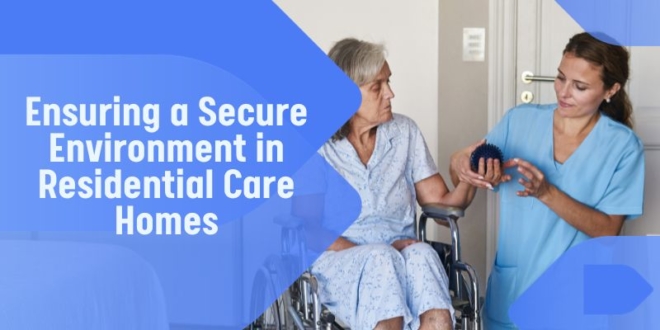The sanctity of home is a universal concept, and for residents in care homes, it takes on an even greater significance. Ensuring a secure environment in residential care homes is not just a responsibility but a fundamental commitment to the well-being of the individuals under their care. This blog post will explore the key strategies and considerations contributing to fostering a safe and secure environment in residential care homes.
Person-Centered Security
A cornerstone of security in residential care homes is adopting a person-centered approach. Recognizing and respecting the individual needs and preferences of residents is vital. Personalized security plans should be tailored to accommodate varying mobility levels, cognitive abilities, and medical requirements. This approach fosters a sense of autonomy and dignity while addressing the unique safety concerns of each resident.
Trained and Compassionate Staff
The frontline defense in any care home is its staff. Ensuring that staff members are well-trained in security protocols and exhibit compassion and empathy is crucial. Regular training sessions can keep staff updated on the latest safety procedures, emergency protocols, and effective communication strategies. A compassionate staff fosters a supportive atmosphere, assuring residents that their well-being is a top priority. Baily House Care Home in Mansfield exemplifies the commitment to ensuring a secure and compassionate environment for residents by integrating personalized security measures, well-trained staff, and advanced technology within its person-centered care approach.
Robust Access Control
Implementing stringent access control measures is paramount to the security of residential care homes. This includes secure entry points, surveillance cameras, and controlled access to different areas within the facility. Regularly updating access credentials and promptly revoking permissions when necessary helps prevent unauthorized entry and ensures the safety of residents.
Emergency Preparedness
A comprehensive emergency preparedness plan is indispensable for residential care homes. Staff should be well-versed in evacuation procedures, and residents should be informed and involved in emergency drills. Emergency exits, clear signage, and accessible emergency supplies are integral components of a well-prepared care facility.
Technology Integration
Embracing technological advancements can significantly enhance the security infrastructure of residential care homes. Surveillance systems, alarm systems, and access control mechanisms can be integrated into a centralized management system for efficient monitoring. Additionally, wearable technology for residents, such as panic buttons or fall detection devices, adds an extra layer of safety.
Health and Safety Audits
Regular health and safety audits ensure that the care home’s environment meets or exceeds regulatory standards. These audits can identify potential hazards, assess the effectiveness of security measures, and provide an opportunity for continuous improvement. Collaborating with regulatory bodies and seeking external assessments can contribute to a safer living environment for residents.
Engaging Residents in Safety Discussions
Residents are valuable stakeholders in their safety. Engaging them in safety discussions empowers them and provides valuable insights into their concerns and suggestions. Regular safety meetings, where residents can voice their opinions and contribute to decision-making, foster a sense of community and shared responsibility.
Securing Outdoor Spaces
The security of residential care homes extends beyond indoor spaces to outdoor areas. Well-lit pathways, secure outdoor seating, and controlled access to gardens or recreational spaces provide a safe and pleasant environment. Outdoor security measures should be integrated seamlessly with the overall safety plan of the care home.
Transparent Communication
Open and transparent communication is critical to maintaining trust within a residential care home. Regularly updating residents and their families about security measures, policy changes, and any incidents that may have occurred helps build a sense of trust and community. Clear communication channels also enable residents to report concerns promptly.
Collaboration with the Community
Residential care homes are not isolated; they are integral parts of larger communities. Establishing positive relationships with local law enforcement, healthcare providers, and community organizations can enhance the overall security of the care home. Collaborative efforts can provide residents with additional resources, support, and a sense of belonging.
Conclusion
Ensuring a secure environment in residential care homes goes beyond the physical safety measures; it encompasses creating a supportive and dignified living space for residents. By adopting person-centered approaches, investing in staff training, utilizing technology, and fostering transparent communication, care homes can create an environment where residents feel safe, respected, and cared for. In prioritizing security, residential care homes contribute to the well-being and quality of life of those who call these facilities home.







